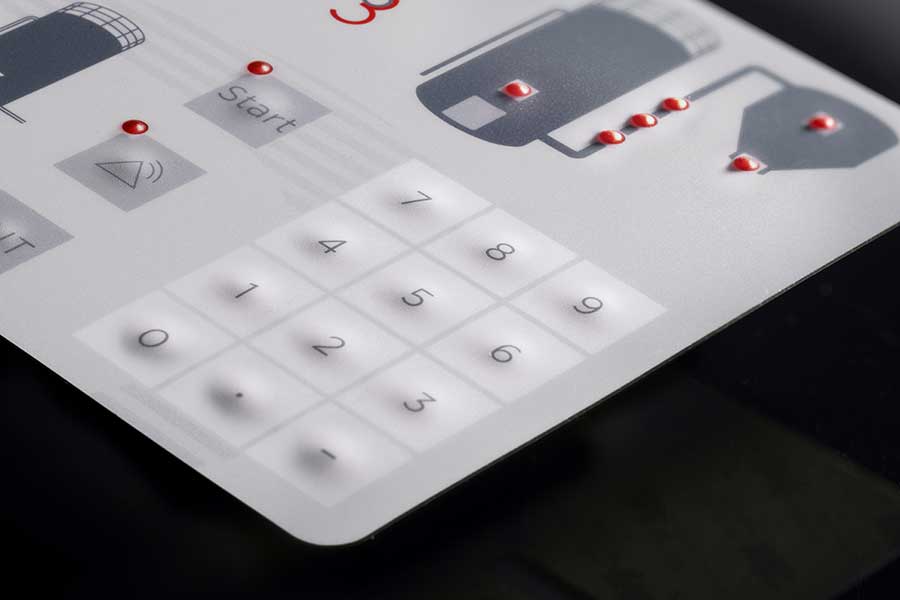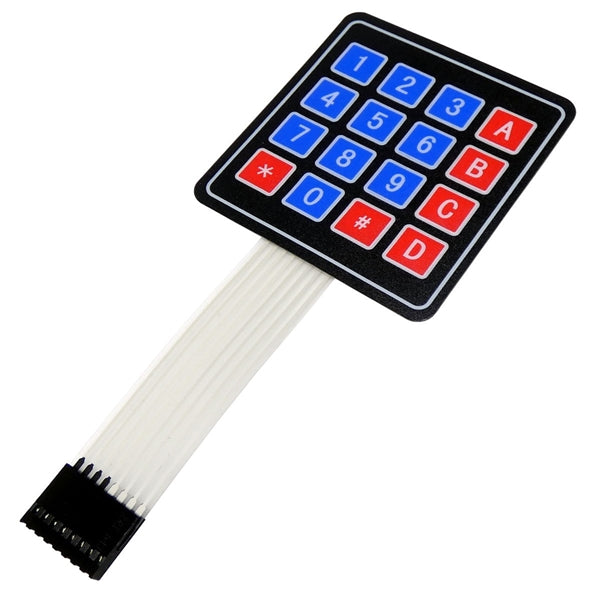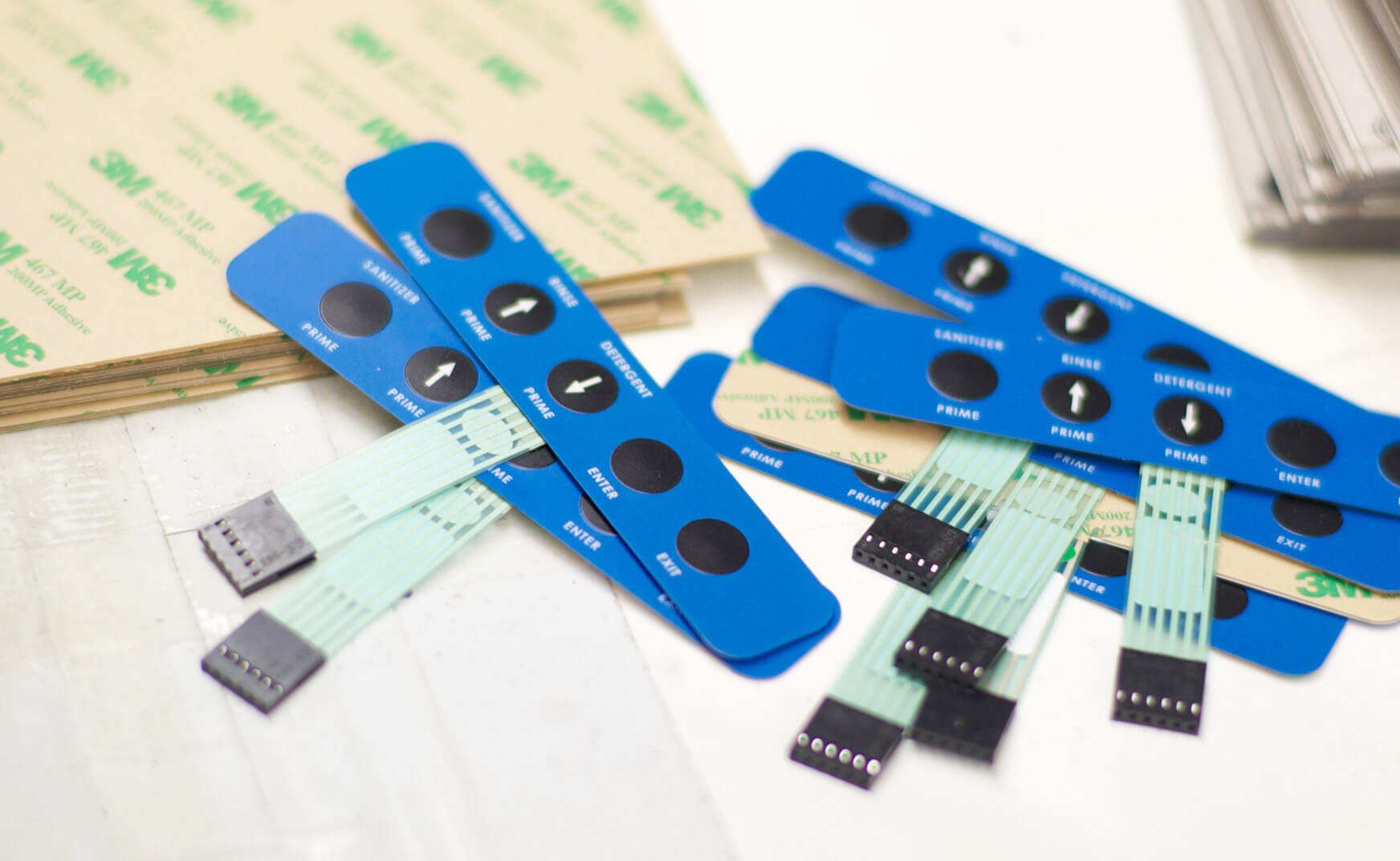Everything About Membrane Switch Over: Recognizing Its Design and Capability
When you think of the control user interfaces in modern-day tools, membrane layer switches frequently enter your mind. These elements are extra than simply buttons; they mix style and functionality flawlessly. Understanding exactly how they work and what makes them efficient can alter your viewpoint on daily electronics. There are subtleties to their layout and efficiency that you could not be conscious of. Let's explore what sets membrane layer switches over apart from various other control systems.
What Are Membrane Layer Buttons?

Membrane layer switches can additionally be personalized pertaining to shape, dimension, and graphics, enabling suppliers to develop one-of-a-kind user interfaces tailored to certain items. Overall, membrane layer switches play a substantial function in improving customer experience throughout a vast selection of applications.
Just How Membrane Switches Over Job
When you press a key on a membrane switch, it triggers an uncomplicated yet effective mechanism. The top layer, frequently made of adaptable material, lowers onto a conductive layer under it. This activity bridges the space in between conductive traces, finishing an electric circuit. As quickly as the circuit shuts, it sends out a signal to the device's controller, which translates your input.
You'll see that the tactile comments differs based on the switch layout, offering either a soft click or an extra noticable reaction. When you launch the secret, the membrane returns to its original setting, resuming the circuit and quiting the signal. This procedure takes place almost immediately, making sure a responsive customer experience.
Membrane layer switches are prominent due to their resilience and resistance to dust and moisture, making them ideal for various applications, from home appliances to clinical tools. Comprehending this procedure aids you appreciate their widespread usage.
Key Elements of Membrane Buttons
Recognizing the key elements of membrane switches is basic for grasping their functionality and style. The safety layer shields versus ecological aspects and use, extending the button's life expectancy. By comprehending these components, you'll acquire understanding right into just how membrane layer changes operate and their relevance in numerous applications.
Products Made Use Of in Membrane Layer Switch Over Design
The performance and longevity of membrane switches over heavily rely on the materials used in their design. You generally encounter polyester and polycarbonate as main substratums due to their excellent stamina and versatility. These products resist scratches and chemicals, making them optimal for demanding settings.
The conductive layers often use silver or carbon, chosen for their dependability and conductivity. membrane switch manufacturer. Silver provides superior performance, while carbon is a cost-effective alternative. For the overlay, you could think about a matte or glossy surface, depending upon your visual requirements and user experience
Adhesives play a vital function as well; they bond layers securely and guarantee long life. Ensure to choose adhesives that endure environmental elements like temperature level and humidity. Finally, don't ignore the significance of an excellent printing method for graphics, as it enhances both functionality and aesthetic allure. Choosing the appropriate materials will guarantee your membrane button stands the examination of time.
Style Factors To Consider for Membrane Switches
While designing membrane switches, it's essential to consider different elements that affect their functionality and individual experience. Beginning by concentrating on the format and button dimension; make sure they're instinctive and simple to navigate. Take into consideration the tactile comments you want to supply-- will individuals need a noticeable click or a softer touch? Additionally, consider the materials you'll make use of, as they'll impact durability and visual appeals.
Verify your style suits ecological elements, like moisture or temperature variants, which could affect efficiency. By carefully thinking about these components, you'll develop a membrane layer switch that improves use and complete satisfaction.
Applications of Membrane Layer Switches
Membrane layer buttons are versatile parts located in different applications, from industrial devices to customer electronics. You'll see their effect in makers that visit this site right here require sturdy user interfaces and in devices that take advantage of streamlined designs. Recognizing these applications assists you value the capability and functionality of membrane layer switches in day-to-day innovation.
Industrial Equipment Use
When you're aiming to improve the performance of industrial tools, membrane layer switches offer a trustworthy solution that incorporates longevity with straightforward style. These buttons are best for extreme atmospheres, providing resistance to dust, wetness, and chemicals. You'll find them in control panels for producing machines, heating and cooling systems, and medical gadgets, where accuracy and responsiveness are vital. Their reduced profile suggests they fit perfectly into different tools, saving useful space while maintaining ease of use. With customizable graphics and backlighting alternatives, you can develop an user-friendly user interface for drivers, enhancing efficiency and security. And also, their long life-span decreases upkeep expenses, making them a wise financial investment for your industrial applications. Accept membrane switches to streamline your procedures and improve general performance.
Consumer Electronic Devices Combination
In the domain name of consumer electronic devices, membrane layer buttons play a crucial role in boosting user communication and gadget capability. You'll locate them in tools like microwaves, remotes, and gaming consoles, offering a smooth method to connect with modern technology. Their streamlined layout enables easy integration right into different products, making controls intuitive and user-friendly. With their capacity to include graphics and backlighting, you can take pleasure in a contemporary visual that complements the tool's overall look. Membrane layer buttons additionally ensure toughness and resistance to dust and wetness, prolonging the lifespan of your electronics. By choosing membrane layer switches, you enhance not simply the functionality but also the design of your tools, making day-to-day interactions smooth and delightful.
Benefits and Downsides of Membrane Layer Switches
While membrane buttons provide an array of advantages, they likewise come with some downsides that you must think about. One significant benefit is their small layout, making them perfect for space-constrained applications.

However, there are drawbacks. Membrane layer buttons can have a shorter life expectancy compared to my company mechanical buttons, especially under heavy use. They can additionally be less tactile, which may impact individual responses throughout procedure. If damaged, repairing them can be challenging and typically requires total substitute. Ultimately, their level of sensitivity to severe temperature levels and ecological visit the site conditions might limit their effectiveness in certain settings. Stabilizing these benefits and drawbacks will aid you determine if membrane switches are the ideal fit for your job.
Often Asked Concerns
For How Long Do Membrane Switches Over Usually Last?
Membrane changes normally last in between 5 to 10 years, relying on use and environmental problems. You'll wish to assess elements like wear, exposure to wetness, and temperature level fluctuations to evaluate their longevity effectively.
Can Membrane Switches Be Customized for Details Styles?
Yes, you can personalize membrane switches to fit details designs (membrane switch manufacturer). You'll have the flexibility to select shades, forms, and layouts that match your project's needs, ensuring they mix perfectly with your overall visual
What Is the Price Array for Membrane Layer Switch Over Manufacturing?
The cost variety for membrane button manufacturing usually drops in between $1 and $10 per system, depending upon elements like design complexity, amount, and materials. You can get quotes from producers to locate the most effective option.

Are Membrane Switches Waterproof or Immune?
Membrane buttons can be created to be water-proof or immune, relying on materials made use of and building and construction methods. If you require them for wet environments, guarantee you specify those requirements throughout the design process.
Just How Do Membrane Changes Contrast to Traditional Switches?
Membrane buttons are normally thinner and extra versatile than typical buttons, providing a streamlined style. They're often less complicated to clean and integrate, but may not give the responsive feedback you're used to with mechanical options.
Conclusion
